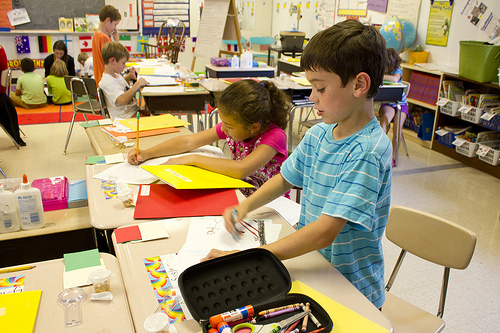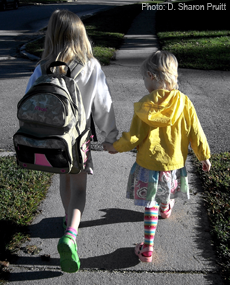Are you looking to take action to decrease chemical exposures in your child’s school? You may have already switched to non-toxic products at home, but on average kids spend eight hours a day at school!
Some of our coalition partners have great tools to help green your child’s school with toolkits that help students, teachers, and administrators make schools safer and healthier.
Greening your school toolkit
“The Green Flag Schools Program for Environmental Leadership,” from our partners at the Center for Health Environment and Justice, provides a framework for schools to engage in environmental advocacy and offers a great breakdown on how to propose safer chemical polices to the administration.
The toolkit focuses on four major project areas:
- Reduce, Reuse, Recycle
- Integrated Pest Management
- Indoor Air Quality
- Non-Toxic Products
Reducing exposure to pesticides
Pesticides and herbicides kill bothersome insects, rodents and weeds, but scientists have found that they can hurt people too, especially kids. Our partners at Toxic Free North Carolina have a guide to introduce an Integrated Pest Management program at your school.
It is an easy and affordable way to eliminate toxic pesticides from schools. Improving maintenance practices and monitoring air circulation in your school is a key step in creating clean indoor air quality.

Switching to safer, less-toxic supplies and cleaners.
Many school supplies (or cleaners) contain toxic-chemicals, including: back packs, binders, flooring, hand soaps and art supplies. Switching to safer alternatives will help the environment and school.
- Less toxic art supplies
- Company’s that list all ingredients in their cleaners
- PVC- free school supply guide
Avoiding toxic synthetic turfs
Some schools are implementing synthetic turfs as a replacement to grass fields. Many of these turfs are made of toxic substances and have been tested for lead, benzene, toluene and other harmful chemicals.
Here is an action guide to decrease and prevent lead exposure from toxic turfs and steps to work with school administrators who want to install a synthetic turf at your child’s school.
I hope this provides a good starting point for tackling toxic chemicals in your child’s school.
Let us know in the comments below what other resources you would recommend!
More Helpful Resources
- Five simple steps to a less toxic school, read more…
- Looking for a guide to give childcare centers to contract for Integrated Pest Management? Click here.
- Take a look at this guide for parents about the North Carolina state law on pesticides & other toxics in schools here.
- Here is a high school science curriculum on Integrated Pest Management.




